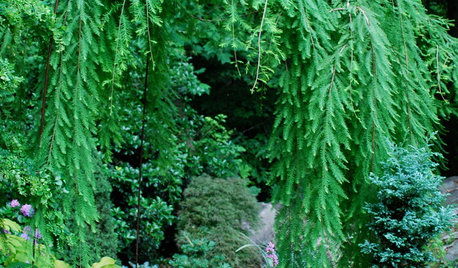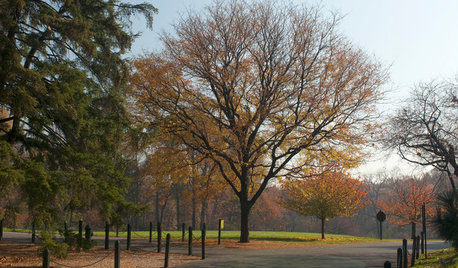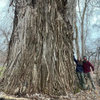Ash Tree? Is it dying?
tjt78
9 years ago
Related Stories

GARDENING GUIDESTree Care: Common Tree Diseases and What to Do About Them
Learn to recognize trees that may be affected by diseases or pests so you can quickly take action
Full Story
HOLIDAYS10 Ways Your Christmas Tree Can Live On After the Holidays
Learn how to recycle your Christmas tree and reap benefits for the environment
Full Story
LANDSCAPE DESIGNThe Weepers and the Creepers: 10 Intriguing Trees for Your Garden
Bring something a little different to your landscape with a tree that dives, twists or crawls
Full Story
LANDSCAPE DESIGN7 Great Trees for Summer Shade and Fall Color
These landscape-pro faves straddle the seasons beautifully. Could one enhance your own yard?
Full Story
GARDENING GUIDESGreat Design Plant: Honey Locust Tree
No, it doesn't actually produce honey. But its dappled light and tolerant nature are treats in city and country settings alike
Full Story
GARDENING GUIDESHow to Keep Your Trees Healthy
Ensure your trees’ vigor for years to come with these tips for protecting roots, watering effectively and more
Full Story
HOMES AROUND THE WORLDMy Houzz: Where Palm Springs Meets Gum Trees
A love of midcentury design and a knack for renovating lead this family to a 1960s gem on the outskirts of Melbourne
Full Story
GARDENING GUIDESHow to Keep Your Citrus Trees Well Fed and Healthy
Ripe for some citrus fertilizer know-how? This mini guide will help your lemon, orange and grapefruit trees flourish
Full Story
EDIBLE GARDENSHow to Grow 10 Favorite Fruit Trees at Home
Plant a mini orchard in fall, winter or early spring to enjoy fresh-off-the-tree fruit the following year
Full Story
FARM YOUR YARDIf You Have Room for Only One Fruit Tree ...
Juice up a small garden with one of these easier-care or worth-the-effort fruit trees for a mild climate
Full StoryMore Discussions









tjt78Original Author
tjt78Original Author
Related Professionals
Canton Landscape Architects & Landscape Designers · Accokeek Landscape Architects & Landscape Designers · Ilchester Landscape Architects & Landscape Designers · Kyle Landscape Architects & Landscape Designers · Middletown Landscape Contractors · Barrington Landscape Contractors · Burlington Landscape Contractors · Dallas Landscape Contractors · Paso Robles Landscape Contractors · Palos Heights Landscape Contractors · Hamden Siding & Exteriors · Fort Myers Decks, Patios & Outdoor Enclosures · Greeley Decks, Patios & Outdoor Enclosures · Highland Springs Decks, Patios & Outdoor Enclosures · Agoura Hills Stone, Pavers & Concreteken_adrian Adrian MI cold Z5
tjt78Original Author
tjt78Original Author
hairmetal4ever
calliope
arbordave (SE MI)
tjt78Original Author
Toronado3800 Zone 6 St Louis
tjt78Original Author
calliope